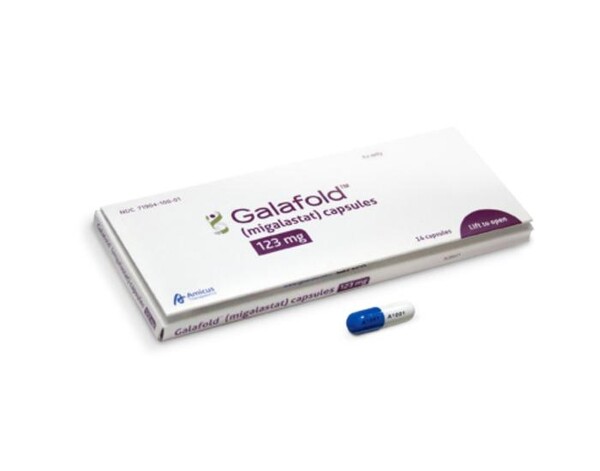A new study confirms that the oral treatment for Fabry disease, Galafold (migalastat), is effective in pediatric patients aged 12 to 18.
Handok said Wednesday that the results of the ASPIRE study of Galafold in pediatric patients were published in May in the international journal Molecular Genetics and Metabolism. Galafold is the world's first oral treatment for Fabry disease, developed by Amicus Therapeutics and distributed in Korea by Handok.

Because Fabry disease is a progressive lysosomal storage disorder with symptoms often beginning in childhood, early diagnosis and treatment are critical for pediatric patients.
The ASPIRE study was designed to assess the efficacy and safety of Galafold in pediatric Fabry patients aged 12 to 18, weighing at least 45 kg, who carry an amenable (or “compliant”) variant of the GLA gene. Endpoints included renal function (eGFR, albuminuria), cardiac function (LVMi), lyso-Gb3 levels, as well as health, pain, and quality-of-life indices.
Results showed that renal and cardiac parameters and plasma lyso-Gb3 levels remained stable in patients treated with Galafold. Additionally, pain and gastrointestinal symptoms (measured by FABPRO-GI and PGI-C) were stable or improved, and quality of life (evaluated using the Fabry-specific Pediatric Health and Pain Questionnaire [FPHPQ] and PedsQL) was maintained or improved.
No new adverse events or unexpected safety concerns were observed during safety assessments. Adherence in the Galafold arm was high, at 97 percent, with no patients falling below 80 percent.
The pediatric dosing regimen is the same as for adults: one capsule every other day by mouth. Clinic visits are limited—once every 30 days for the first six months, then once every 60 days—requiring only six to nine visits per year.
Unlike enzyme replacement therapies (ERTs), which rely on intravenous infusions of exogenous enzymes, Galafold works by stabilizing the patient’s own (endogenous) enzymes to function properly. Its small molecular weight enables wide distribution throughout the body.
A separate 30-month long-term clinical trial confirmed that switching from ERT to Galafold preserved kidney function and reduced cardiac mass index in Fabry patients (aged 16 to 74) with amenable mutations, further supporting its long-term safety and efficacy.
Galafold is now available in 45 countries, including the U.S., U.K., Australia, Japan, and across Europe. It was approved in Korea in 2017.
“In 2019, it was included under insurance coverage for treating Fabry disease. However, unlike most countries, Korea only covers Galafold as a second-line treatment, not as first-line therapy,” Handok said. “Many Korean patients hope to lower the barrier to oral therapies, which make daily life and travel much easier. The Health Insurance Review and Assessment Service (HIRA) is currently reviewing expanded reimbursement for Galafold as a first-line treatment.”
Related articles
- Fabry disease patient urges reform of reimbursement standards for early treatment
- GC Biopharma and Hanmi kick off global trial for once-monthly Fabry drug
- Hanmi and GC Biopharma to begin global trials for monthly Fabry disease treatment
- ‘Fabry disease’ is harder to diagnose because symptoms vary with age
- Sanofi Korea joins hands with DeepCardio to improve diagnostic environment for Fabry disease
- Reimbursement for oral Fabry disease drug Galafold expanded to 1st-line treatment
- Galafold shows stable renal outcomes in 1st Korean real-world Fabry study

